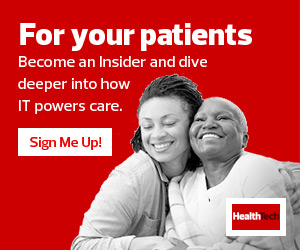How a CTMS Helps With Clinical Research Timelines and Billing Compliance
Clinical researchers use CTMSs to improve trial timelines and maintain compliance with billing terms.
“A CTMS helps improve clinical research timelines by streamlining and automating processes and centralizing tracking so that activities can be conducted consistently and in parallel, reducing time, effort and resource demands,” Kennedy says. “The historical data captured centrally during trials can be used to improve planning timelines and assumptions for future studies.”
By managing billing compliance through a CTMS, trial managers ensure that the correct number of sponsors are funding a trial, according to Tamas Peterson, CTMS product manager at Advarra, which offers CTMS platforms such as OnCore and Clinical Conductor.
RELATED: Learn how clinical decision support systems improve patient outcomes.
“Financials are an area where we really try and help with those workflows to make sure we're helping with the timeline, as well as making sure that all of the items are being accounted for and paid for,” Peterson says.
Prior to the advent of CTMSs, trial managers would manage financials for clinical trials in Excel, requiring a lot of time to input information manually, Peterson adds.
Medical University of South Carolina (MUSC), a biomedical research institution, ran large COVID-19 vaccine trials starting in September 2020 using Advarra’s OnCore CTMS on a compressed timeline.
“We pivoted very quickly to get that up and running so that could be housed and managed out of the CTMS,” says Steve Shapiro, associate director of clinical trial management systems at MUSC. “It was a huge timesaver to be able to deal with an unwieldy number of participants as well as visits and research dollars that needed to be invoiced out,” he says.
How to Integrate a CTMS With an EHR or ePRMS
A key function of a CTMS is to integrate with electronic health records (EHRs) and electronic protocol review and monitoring systems (ePRMSs). CTMS users gather key information from EHRs, including demographics, vital signs, laboratory data and medications.
Kennedy provides some tips on how to carry out EHR integration:
- Monitor the state of events across systems and the order they occur, which can be unexpected.
- Decide which data will be the “ultimate source of truth,” especially when you combine it with CTMS analytics.
- Limit data duplication during integration, since a CTMS is not a location to store data but to monitor event status during a trial.
- Use open application program interfaces (APIs) to share information between a CTMS and an EHR/ePRMS to maintain real-time access to the data required between both systems.
Advarra’s OnCore platform includes an ePRMS, which lets trial managers ensure that stakeholders review protocol documents correctly. The module lets users manage committee reviews. It includes a scheduling and submission component so users can ensure that a protocol goes through its proper review process throughout the clinical trial lifecycle.
The Fast Healthcare Interoperability Resources (FHIR) interface allows the Advarra CTMS to work together with EHRs, Peterson says. Advarra also has what it calls an “ensemble community” where customers come together to share notes on how to integrate EHRs and CTMSs, according to Peterson.
At MUSC, clinical trial managers query an EHR platform from within the CTMS to see which patients might want to enroll in a trial, Shapiro says. Users note the status of participants as consented, on study, on treatment or on follow-up, he says.
LEARN MORE: Understand how de-identified and anonymized data drive clinical trials.
CTMS Helps MUSC Expand Clinical Trial Research
MUSC says a CTMS was critical to its efforts to expand research across the state of South Carolina. The system allows the medical institution to capture accrual and distinguish Charleston-enrolled participants from those enrolled in Florence, Lancaster, Columbia or regional health network affiliates.
“Being able to expand research out to our affiliates allows us to reach rural and other communities that would not have had access to cutting-edge clinical research trials previously,” says Royce Sampson, director of the Office of Clinical Research at MUSC.
The institution was looking for a platform to track all activities, invoices and milestone items consistently, according to Sampson.
Going forward, a key challenge for MUSC will be creating a culture change to get leadership buy-in for the CTMS applications and convince its busy staff to use them to navigate fast-paced workflows.
“Over time, it will make it easier for them to know what they need to do,” Sampson says. “It will make less work on them as they have systems they can use consistently across projects.”











